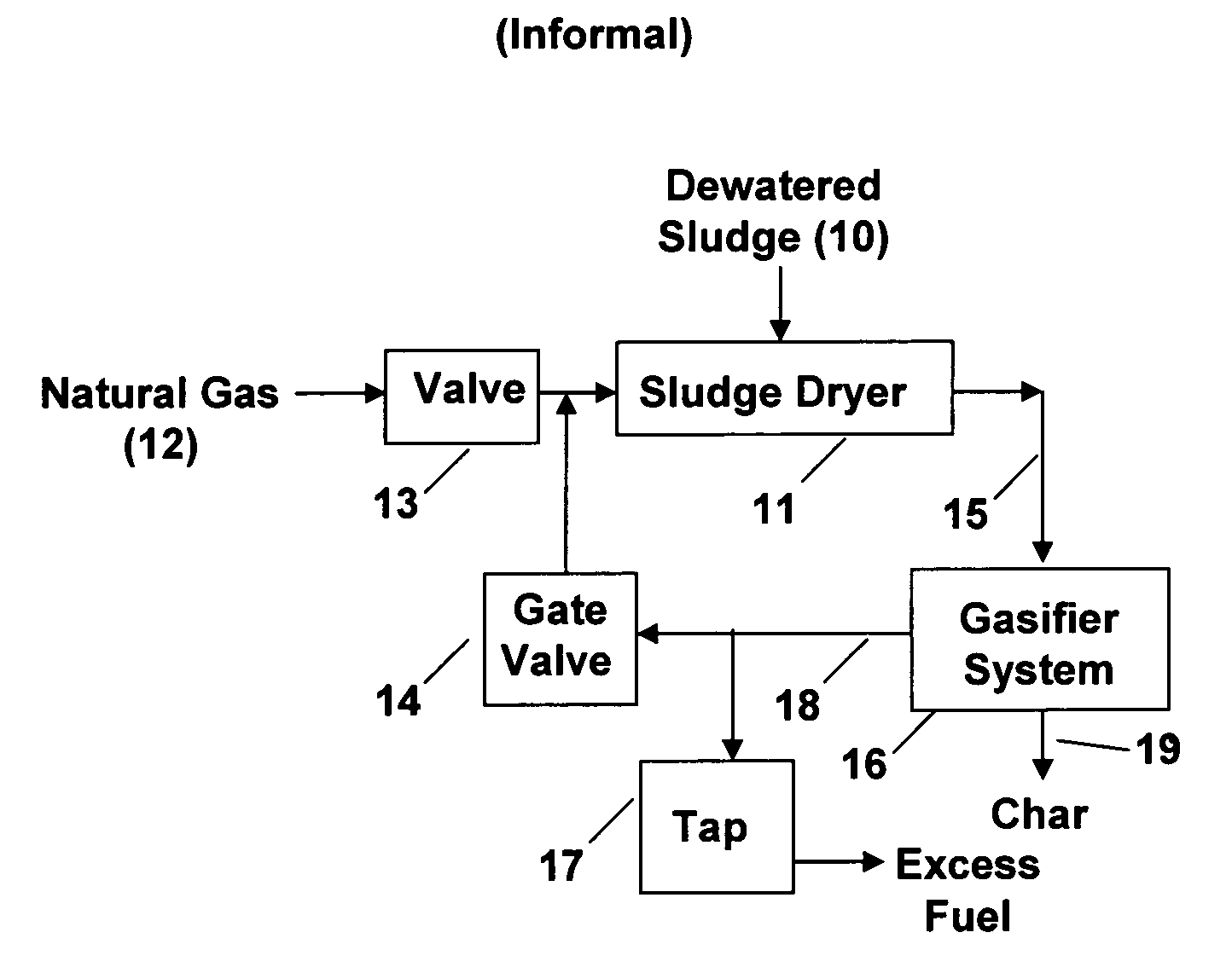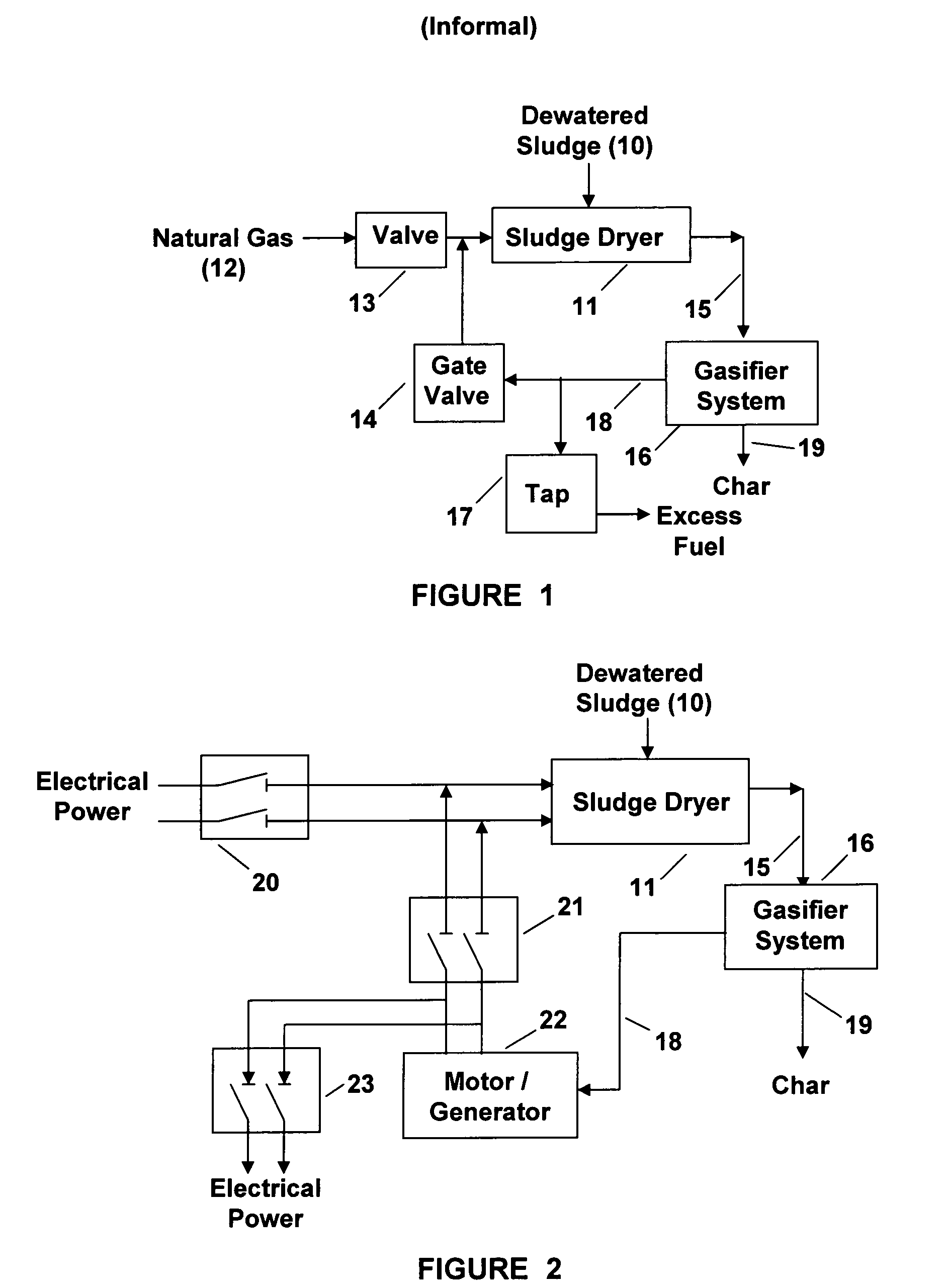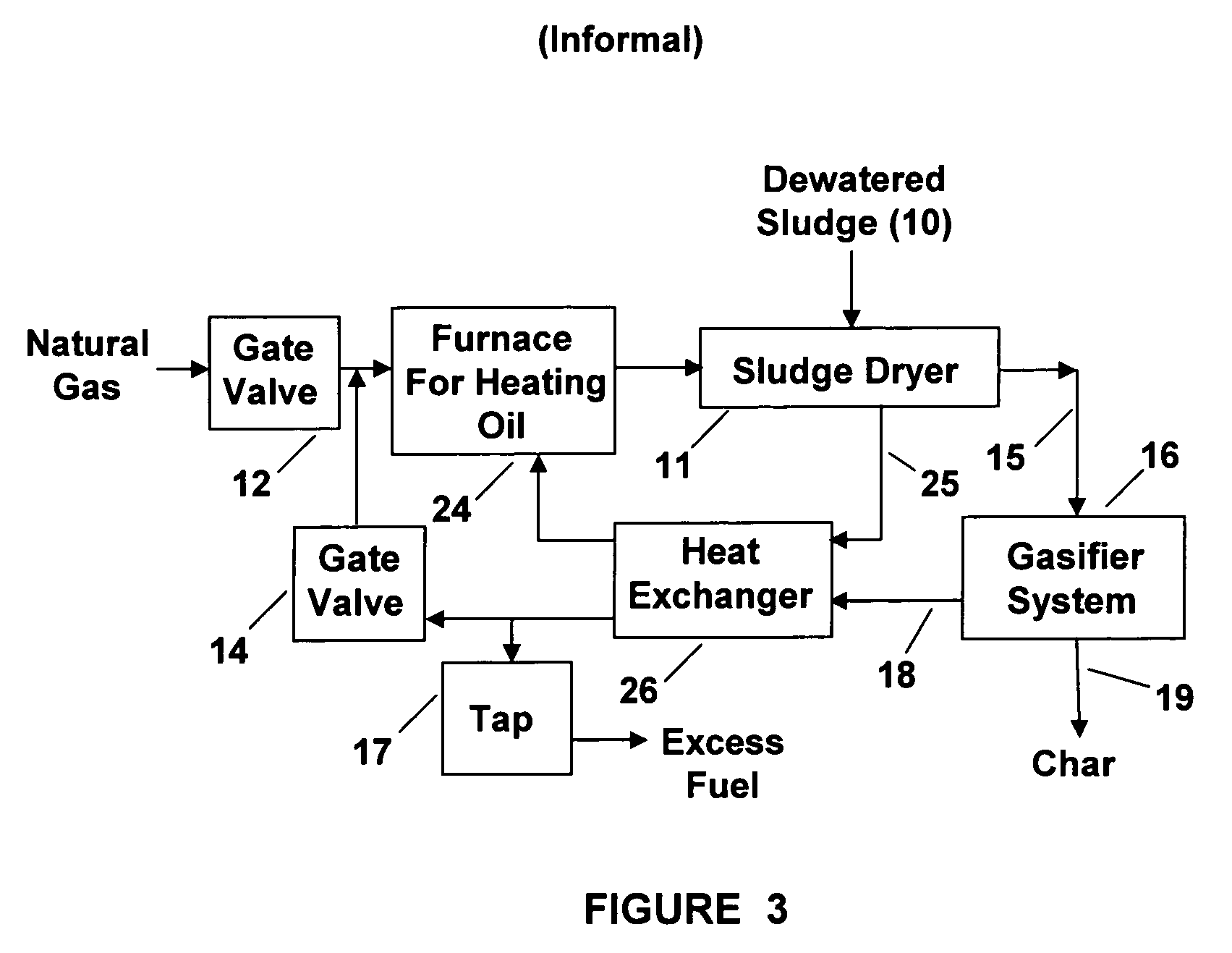System and method for processing sewage sludge and other wet organic based feedstocks to generate useful end products
a technology of organic based feedstocks and processing systems, applied in separation processes, lighting and heating apparatuses, combustion types, etc., can solve the problems of increasing transportation costs to new locations, contaminating local streams, rivers and groundwater supplies, and proving controversial methods in today's environment, so as to reduce or eliminate the production of harmful byproducts and safely dispose of them. , the effect of eliminating one of the single greatest costs
- Summary
- Abstract
- Description
- Claims
- Application Information
AI Technical Summary
Benefits of technology
Problems solved by technology
Method used
Image
Examples
Embodiment Construction
[0017]In FIG. 1 is shown a block diagram of a system that initially uses a fuel, such as natural gas but other fuel gasses may be used, to start the partial drying of sewerage sludge and other organic based feedstock materials, to produce safe, useful end products such as fuels synthetic gasses or bio-oil, and char that may be recycled into useful byproducts. Thus, the operation is energy efficient, environmentally safe and economically viable. Hereinafter, such organic based feedstock waste are only referred to as sewerage sludge, but those skilled in the art will understand that any organic based feedstock materials may be processed using the novel method disclosed herein.
[0018]Pyrolytic and / or gasification processes are capable of extracting synthesis gasses such as carbon monoxide (CO) and hydrogen (H2) from a wide range of organic materials including, sewage sludge. In the following description sewage sludge is referenced but other materials, (i.e. feed stocks), may also be pro...
PUM
| Property | Measurement | Unit |
|---|---|---|
| thermal energy | aaaaa | aaaaa |
| temperature | aaaaa | aaaaa |
| energy | aaaaa | aaaaa |
Abstract
Description
Claims
Application Information
 Login to View More
Login to View More - R&D
- Intellectual Property
- Life Sciences
- Materials
- Tech Scout
- Unparalleled Data Quality
- Higher Quality Content
- 60% Fewer Hallucinations
Browse by: Latest US Patents, China's latest patents, Technical Efficacy Thesaurus, Application Domain, Technology Topic, Popular Technical Reports.
© 2025 PatSnap. All rights reserved.Legal|Privacy policy|Modern Slavery Act Transparency Statement|Sitemap|About US| Contact US: help@patsnap.com



